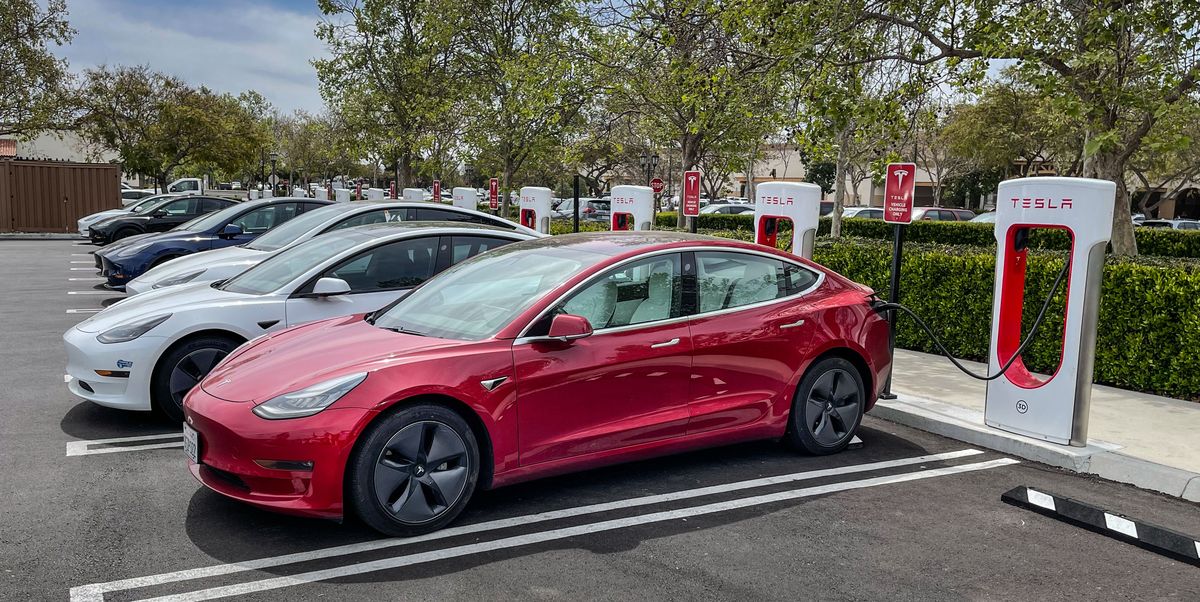New York State Wants to Ban New Gas Cars and Trucks by 2035

The State of New York adopted a plan to phase out sales of gas- and diesel-engined cars and light trucks by 2035, following efforts by California and Washington.New York is implementing interim targets to reach goal of ZEV-only sales, with a 35 percent target by 2026.EV adoption rates in many states, especially between the two coasts, currently lag behind the announced targets, and could create vastly different car sales environments in different neighboring states.
The State of New York has joined Washington and California in introducing efforts that will phase out the sale of new gas and diesel-engined cars and light trucks in the coming years. New York Governor Kathy Hochul directed the State Department of Environmental Conservation to take steps that will gradually phase out the sale of new internal combustion engine vehicles by the year 2035, with a number of interim targets between now and the target year.
The governor’s initiative essentially directs a state administrative agency to adopt rules through rulemaking procedures, similar to an effort first announced by California Governor Gavin Newsom two years ago. However, it was California’s adoption of Advanced Clean Cars II last month that has opened the door to New York state to adopt the same goal.
According to the plan, the rules will require that 35% of light vehicle sales in the state be of zero-emission vehicles by 2026—identical to California’s interim targets promulgated by CARB—moving up to 68 percent by 2030. By 2035, all 100% of light vehicle sales will be mandated to be ZEV.
Some critics of California’s efforts in this regard argue that the plans don’t actually go far enough, neglecting to add more stringent requirements to internal combustion vehicles.
“Both the Advanced Clean Trucks and Advanced Clean Cars II rules would provide the needed regulatory certainty to support a stable market for long-term vehicle purchasing decisions and the development of ZEV charging infrastructure,” the governor’s office said in a statement.
By 2026, the state is investing over $1 billion in zero emissions vehicles, which includes various purchase rebate programs, including a point-of-sale rebate that could take up to $2000 off the purchase price of a zero-emission vehicle by private buyers within the state, adding to the revamped federal rebate program.
“New York is a national climate leader and an economic powerhouse, and we’re using our strength to help spur innovation and implementation of zero-emission vehicles on a grand scale,” Governor Hochul said in announcing the plan.
Still, New York’s plan is more conservative than that of the state of Washington, which is working toward a phase-out of the sales of internal combustion engine cars and light trucks by 2030 according to legislation that was signed into law by Governor Jay Inslee earlier this year. Washington has a head start on many other US states for a number of reasons, including current EV adoption rates, but will still have to take significant steps to bring about a 2030 ICE vehicle sales ban.
While New York state’s planned 2035 phase-out may appear distant enough to be plausible, the interim 35% ZEV target by 2026 perhaps appears less so. It would require nearly double-digit EV sales growth, on average, every year between now and the end of 2026. It is also worth noting that many automakers themselves are not forecasting such growth for EVs in the US by the start of 2026, and a few have indicated that 30% would be optimistic by the year 2030.
“With sustained state and federal investments, our actions are incentivizing New Yorkers, local governments, and businesses to make the transition to electric vehicles,” Governor Hochul added. “We’re driving New York’s transition to clean transportation forward, and today’s announcement will benefit our climate and the health of our communities for generations to come.”
This content is imported from OpenWeb. You may be able to find the same content in another format, or you may be able to find more information, at their web site.



